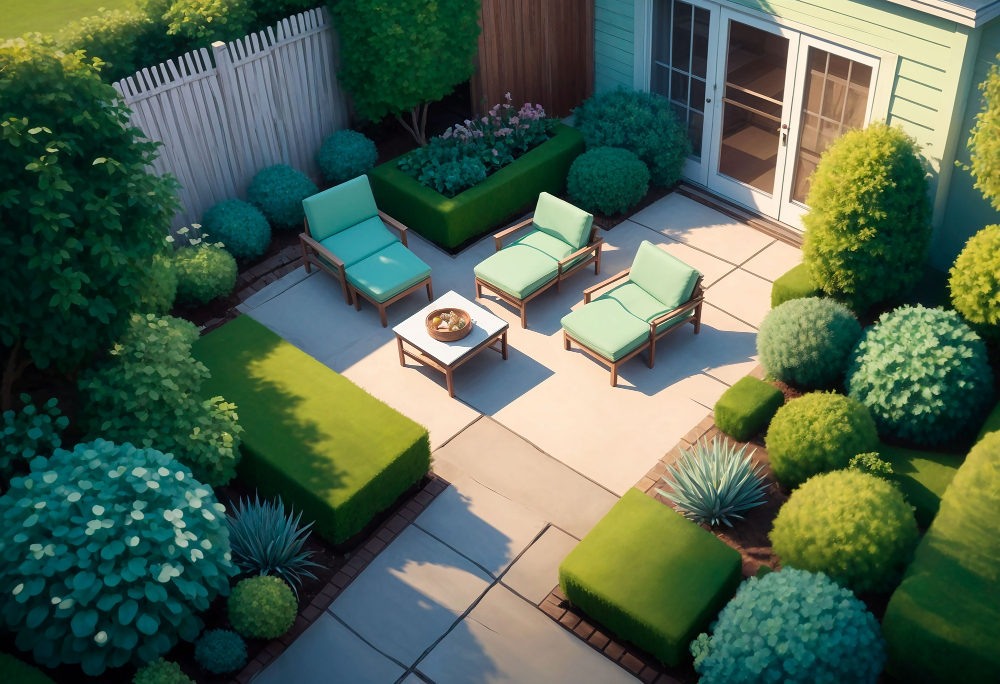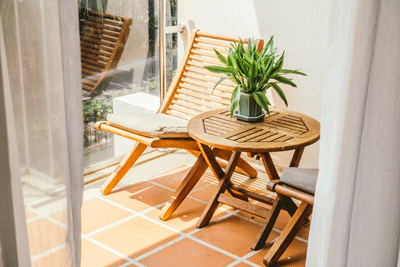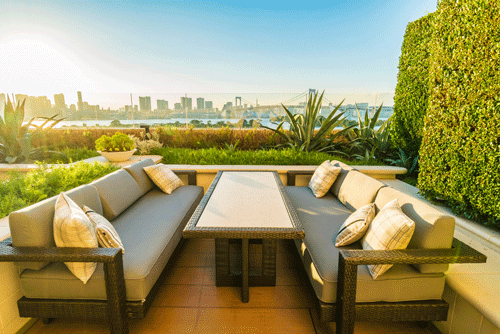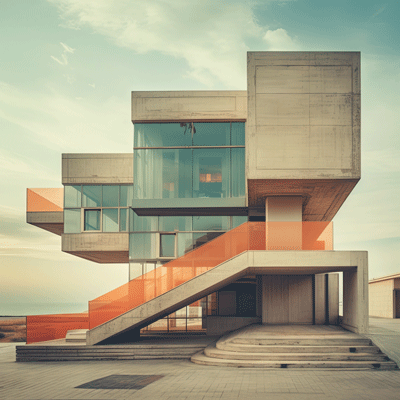
Interior & Exterior Design
Landscaping
Essential Tips for Effective and Beautiful Landscape Design
Landscape design is the art of arranging the natural and built elements of your outdoor space. A successful design creates a harmonious, sustainable, and usable environment that enhances your property and quality of life.
1. Start with a Master Plan
Even if you implement it in phases, a overall plan is crucial for a cohesive result.
Site Analysis: Before you design, understand your site.
Sun and Wind Patterns: Track where the sun rises, sets, and which areas get full sun, partial sun, or full shade. Note prevailing wind directions.
Soil Type: Is it clay, sand, or loam? This affects drainage and plant selection.
Topography: Note any slopes, low spots, or drainage issues.
Define Your Needs and Desires: What do you want from your yard? A play area for children? A vegetable garden? A private retreat? An entertainment space? Make a list of priorities.
2. Create a Sense of Structure and Flow
Think of your landscape as a series of outdoor rooms.
Create “Rooms”: Use hedges, fences, trellises, or changes in paving materials to define different areas (e.g., a dining “patio,” a quiet “reading nook,” a lawn “play area”).
Establish Focal Points: Draw the eye and create interest. This could be a specimen tree, a water feature, a sculpture, or a beautiful bench.
Consider Sightlines: What do you see from your primary windows (like the kitchen or living room)? Frame pleasant views and screen undesirable ones.
3. Follow the Principles of Design
These universal principles will make your landscape visually pleasing.
Unity and Repetition: Create a cohesive look by repeating certain elements, such as plants, colors, or materials, throughout the landscape. This ties different areas together.
Balance: Strive for visual equilibrium. This can be symmetrical (a formal garden with mirrored sides) or asymmetrical (different elements with equal visual weight).
Scale and Proportion: Ensure the size of plants and hardscape elements is appropriate for your house and the overall space. A huge fountain will overwhelm a small patio, and tiny plants will get lost in a vast border.
4. Master the Art of Plant Selection and Layering
This is where your landscape comes to life.
Right Plant, Right Place: Choose plants that will thrive in your specific conditions (sun, shade, soil, climate). This is the key to a low-maintenance garden.
Create Layers: Mimic nature by planting in layers.
Canopy Layer: Large trees.
Understory Layer: Smaller trees and large shrubs.
Shrub Layer: Mid-sized shrubs.
Herbaceous Layer: Perennials and grasses.
Groundcover Layer: Low-growing plants to cover the soil.
Consider Year-Round Interest: Choose a mix of plants so something is always appealing.
Spring/Summer: Flowers.
Fall: Foliage color and berries.
Winter: Evergreen structure, interesting bark, and seed heads.
5. Incorporate Hardscape Thoughtfully
Hardscape refers to the non-living elements.
Create Patios and Pathways: Use materials that complement your home’s architecture (e.g., brick, flagstone, pavers, gravel). Ensure paths are wide enough for two people to walk comfortably (at least 3-4 feet).
Balance Hard and Soft Surfaces: Too much paving can feel harsh and increase water runoff. Aim for a good balance between planted areas and built surfaces.
6. Prioritize Sustainability (Xeriscaping)
A modern landscape should be environmentally friendly.
Water Conservation: Group plants with similar water needs (hydrozoning). Use drip irrigation for efficiency. Consider native plants, which are adapted to local rainfall patterns.
Improve Soil Health: Add compost to improve soil structure and water retention.
Choose Native Plants: They support local birds, butterflies, and pollinators and generally require less water and fertilizer.
7. Plan for Lighting
Landscape lighting extends the use of your yard into the evening and adds drama and safety.
Safety Lighting: Illuminate steps, pathways, and changes in level.
Ambiance Lighting: Use uplighting to highlight architectural plants or trees, downlighting from trees to create a moonlit effect, and accent lighting for features like a water fountain.
Task Lighting: Provide light for cooking or dining on a patio.
8. Don’t Forget the Practicalities
Drainage: This is critical. Ensure water flows away from your house and doesn’t pool in lawns or planting beds. Use French drains or dry creek beds if necessary.
Irrigation: Plan a water source. A well-designed irrigation system can save time and water.
Maintenance: Be realistic about how much time you want to spend on upkeep. A low-maintenance design might favor more hardscape, native plants, and groundcovers over a high-maintenance lawn.
Common Landscape Design Mistakes to Avoid
Ignoring Mature Size: Planting trees or shrubs too close to the house or each other is a very common error. Always check the plant’s mature height and width.
Planting in a Straight Line (The “Soldier Effect”): For informal gardens, arrange plants in staggered, drifts of odd numbers (3, 5, 7) for a more natural look.
A “One-of-Everything” Garden: This creates a busy, chaotic feel. Repetition of key plants creates rhythm and unity.
Poor Drainage: Installing a beautiful patio without solving underlying drainage issues will lead to problems later.
Forgetting the Winter View: Consider how the landscape will look from your windows during the dormant season.
In summary, great landscape design is a balance between art and science. It connects your home to its environment, creates usable outdoor living space, and evolves beautifully over time, bringing joy and value to your property for years to come.






